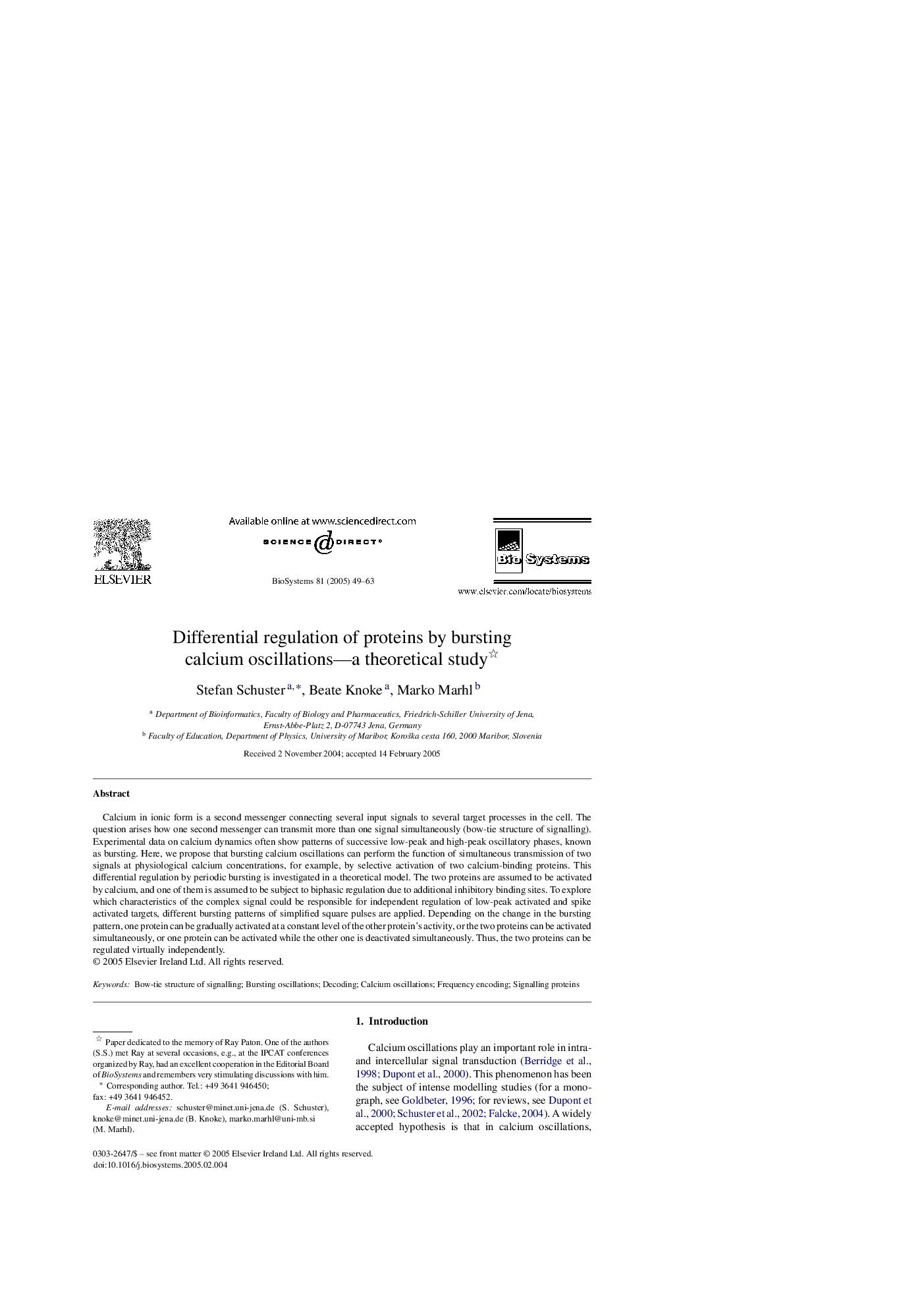| Article ID | Journal | Published Year | Pages | File Type |
|---|---|---|---|---|
| 10884853 | Biosystems | 2005 | 15 Pages |
Abstract
Calcium in ionic form is a second messenger connecting several input signals to several target processes in the cell. The question arises how one second messenger can transmit more than one signal simultaneously (bow-tie structure of signalling). Experimental data on calcium dynamics often show patterns of successive low-peak and high-peak oscillatory phases, known as bursting. Here, we propose that bursting calcium oscillations can perform the function of simultaneous transmission of two signals at physiological calcium concentrations, for example, by selective activation of two calcium-binding proteins. This differential regulation by periodic bursting is investigated in a theoretical model. The two proteins are assumed to be activated by calcium, and one of them is assumed to be subject to biphasic regulation due to additional inhibitory binding sites. To explore which characteristics of the complex signal could be responsible for independent regulation of low-peak activated and spike activated targets, different bursting patterns of simplified square pulses are applied. Depending on the change in the bursting pattern, one protein can be gradually activated at a constant level of the other protein's activity, or the two proteins can be activated simultaneously, or one protein can be activated while the other one is deactivated simultaneously. Thus, the two proteins can be regulated virtually independently.
Related Topics
Physical Sciences and Engineering
Mathematics
Modelling and Simulation
Authors
Stefan Schuster, Beate Knoke, Marko Marhl,
